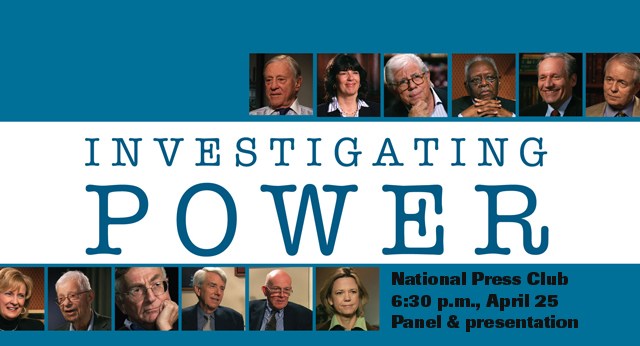The Beautiful Universe: A Convergence of Art and Science

“Perhaps the great error is believing we’re alone/that the others have come and gone—a momentary blip/when all along, space might be choc-full of traffic,/bursting at the seams with energy we neither feel/nor see, flush against us.”
What’s the Big Idea?
It’s been called “a soundtrack to the universe,” but in Tracy K. Smith’s Life on Mars, a collection of poems which was honored with a Pulitzer prize last week, science is more than a metaphor for longing.
It’s palpable. And it’s exciting. Smith is as comfortable writing about a future in which the sun has been replaced by a Standard Uranium-Neutralizing device as she is contemplating the meaning of the word “matter.” Her sense of humor is geeky, with a few of her turns of phrase that Bill Nye would envy (“the universe is a house party”). But what’s most interesting about Life on Mars is how seriously Smith engages with contemporary physics and biology.
We expect works of art to enlighten us, and we expect science to enlighten us — yet the two fields are frequently regarded as separate, distinct entities which we respond to using different areas of the brain. Writers and musicians are seen as precious, secular priests who deal in truth with a capital T, while scientists are off making systematic and testable hypotheses about the world. It’s all about the binaries: thought versus emotion, reason versus intuition.
What if those distinctions are arbitrary? As Leonard Shlain suggests in his classic Art & Physics: Parallel Visions in Space, Time, and Light, innovations in artistic style often precede scientific breakthroughs. Picasso was experimenting with space and time in art well before Einstein published his papers on relativity. Perhaps intellectual paradigms begin as cultural zeitgeists. Not only have scientists and artists exchanged ideas throughout history (Picasso read Poincare), but the question of what is science and what is art is unresolved. Many artists view the studio as a lab, and scientists speak often about theory and discovery as if it were art.
Arlie Petters is a professor of physics and math at Duke. His research on how light is affected by the warping of space and time involves testing out Einstein’s relativity and hyperspace gravity models. Petters was the first person to develop a mathematical theory of gravitational lensing.
As a child growing up in Belize, he’d wanted to be an artist. “It felt so good,” he says of the hours he spent drawing. It was the same feeling — a sense of connection — that occurred to him when he looked up at the night sky, and when he first discovered geometry theorems. The connection was what hooked him on science, he says. “I always wanted to be able to have that type of feeling. It’s a bit like a painter. You struggle and it’s not always a nice feeling because it’s going back and forth. But at the end of the day, you are creating something that moves you deep inside.”
Watch our full interview with Arlie Petters:
Neuroscientist Eric Kandel also believes that scientific inquiry, like artistic production, is an essentially creative process. Kandel points out that he uses the same problem-solving strategies for writing and lab work, particularly reductionism, in which “you take a beautiful big problem and find the simplest example of it and try to drive it into the ground.”
As a student, he began studying memory in its most complicated form, in human beings. His progress was excruciatingly slow, so he decided to switch to snails. Studying the simple nervous system in detail gave him insight into learning and memory which he was then able to apply to mice and, ultimately, to people. When he wanted to write a book on “the new biology of mind” — covering questions like “How do we make decisions? How do we respond to music? How do we respond to music? How do we respond to art?” — he made the decision to pare down the big questions into a single, manageable subject.
His latest book, The Age of Insight, is an exploration of the way psychiatry influenced portraiture in early 20th century Vienna, where the leading artists and scientists of the day met regularly in salons.
What’s the Significance?
The idea of cross-disciplinary exchange seems to be catching on again. In a move that harkens back to 1900’s Vienna, the NYC Museum of Modern Art has partnered with SEED (a science magazine which pairs essays on genetics, geology, and history’s most infamous math problems with knock-your-socks off design) to host a salon aimed at sparking collaborations between designers, architects, and scientists.
“At the beginning the spheres can be quite separate,” MOMA’s Curator for Architecture and Design, Paola Antonelli told Big Think. “But when they discover each other and start talking the same language, it’s really unstoppable.” One information architect offered solutions to help deliver accurate and readable data, a significant challenge to geneticists. Architects and scientists share an obsession with the building blocks of the world (and the universe), says Antonelli. “Give them a push, and then they come together.”
Perhaps the attraction is even simpler than that. Scientists and artists are the best examples we have of human beings actively seeking and aiming to articulate the intangible. In Smith’s words, “They live wondering/if they are the only ones, knowing only the wish to know,/and the great black distance they—we—flicker in.”
Image courtesy of Pi-Lens/Shutterstock.com.





